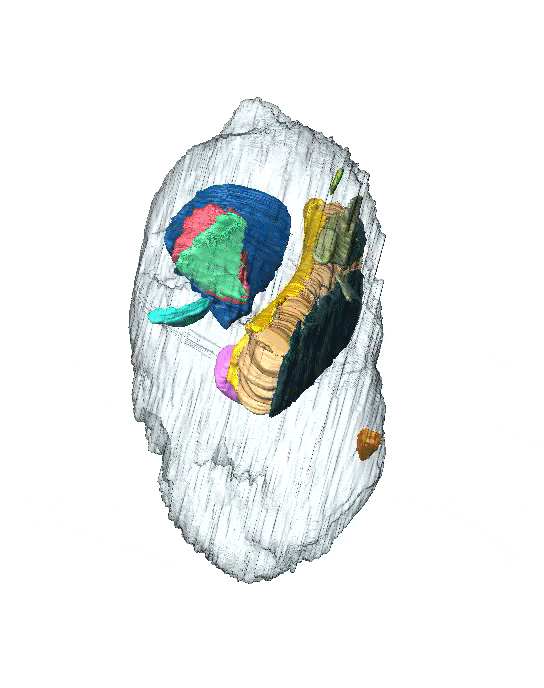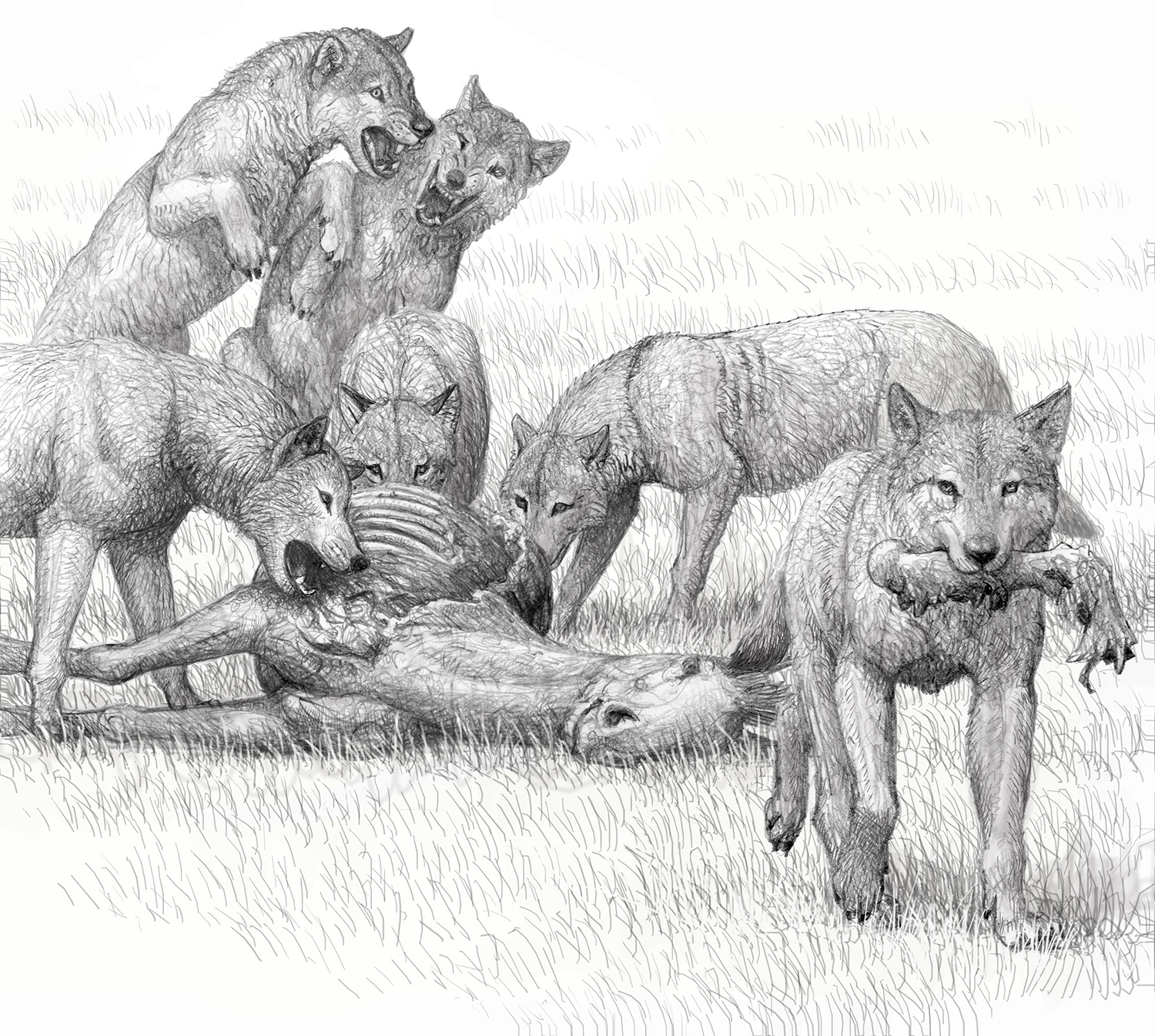Extinct Doggos' Bone-Crushing Diet Preserved in Fossil Poop
Domestic dogs are known to enjoy chewing large bones, but they lack the jaw strength to pulverize them. In fact, in today's ecosystems, the only large predators with skulls and jaws powerful enough to splinter bones are hyenas. But that wasn't the case millions of years ago, researchers reported in a new study.
Scientists had known from years of analyzing fossils of a wolf-size species of wild dog called Borophagus parvus — which lived from about 16 million to 2 million years ago — that its skull and powerful jawbone shared many features with those of bone-crunching spotted hyenas (Crocuta crocuta), according to the study. While this suggested the canid also could crush bones, scientists still couldn't be sure that was true, study co-author Jack Tseng, a functional anatomist at the University at Buffalo, told Live Science in an email. [10 Extinct Giants That Once Roamed North America]
"You could say we were scientifically constipated," Tseng said.
However, the floodgates were opened with the discovery of a cache of coprolites — 14 pieces of fossilized poop — at a site in California's Mehrten Formation. The location dates to the late Miocene epoch, about 5.3 million to 6.4 million years ago, and is known for being rich in Borophagus fossils; the coprolites, which are much rarer than bones, are thought to be about 2 million years old, the study authors reported.
Using micro-computed X-ray tomography (micro-CT) scans to peer inside the ancient poop, the researchers discovered plenty of bone splinters and fragments in all of the specimens, adding up to an average of 5 percent of the coprolites' mass.

"Rarely do paleontologists get the chance to validate our skull-centric research using the other end," Tseng said. And in this instance, the coprolites also told the researchers that Borophagus' eating habits didn't resemble spotted hyenas' as much as they'd thought.
Spotted hyenas thoroughly digest swallowed bones; consequently, when they poop, they produce "mochi-like balls of feces that are full of bone powder," Tseng said. Borophagus poop, on the other hand, held fragments of undissolved bone, suggesting that while the extinct dogs may have swallowed bones like spotted hyenas, they digested them like striped hyenas (Hyaena hyaena) and brown hyenas (Hyaena brunnea), which don't process bones as efficiently as their spotted cousins, Tseng said.
Sign up for the Live Science daily newsletter now
Get the world’s most fascinating discoveries delivered straight to your inbox.

As well as providing clues to Borophagus' diet and digestion, the fossilized poo also testified to how they may have lived. Coprolites were found in communal "latrines" used by multiple individuals, suggesting Borophagus were social, territorial animals, according to the study. Modern hyenas, which are also social hunters, offer a glimpse of how that behavior might be linked to bone crushing after a successful hunt, study lead author Xiaoming Wang, a curator in the Department of Vertebrate Paleontology at the Natural History Museum in Los Angeles, told Live Science in an email.
"While social hunting helps in overcoming large prey, once the prey is secured, the feeding itself is also highly competitive. So competitive, in fact, that individual hyenas have no time to chew their meat, and they simply break down the prey in large enough chunks and quickly swallow bones and meat together, in order to grab the next bite of food," Wang explained.
The findings were published online May 22 in the journal eLife.
Original article on Live Science.

Mindy Weisberger is an editor at Scholastic and a former Live Science channel editor and senior writer. She has reported on general science, covering climate change, paleontology, biology and space. Mindy studied film at Columbia University; prior to Live Science she produced, wrote and directed media for the American Museum of Natural History in New York City. Her videos about dinosaurs, astrophysics, biodiversity and evolution appear in museums and science centers worldwide, earning awards such as the CINE Golden Eagle and the Communicator Award of Excellence. Her writing has also appeared in Scientific American, The Washington Post and How It Works Magazine. Her book "Rise of the Zombie Bugs: The Surprising Science of Parasitic Mind Control" will be published in spring 2025 by Johns Hopkins University Press.









